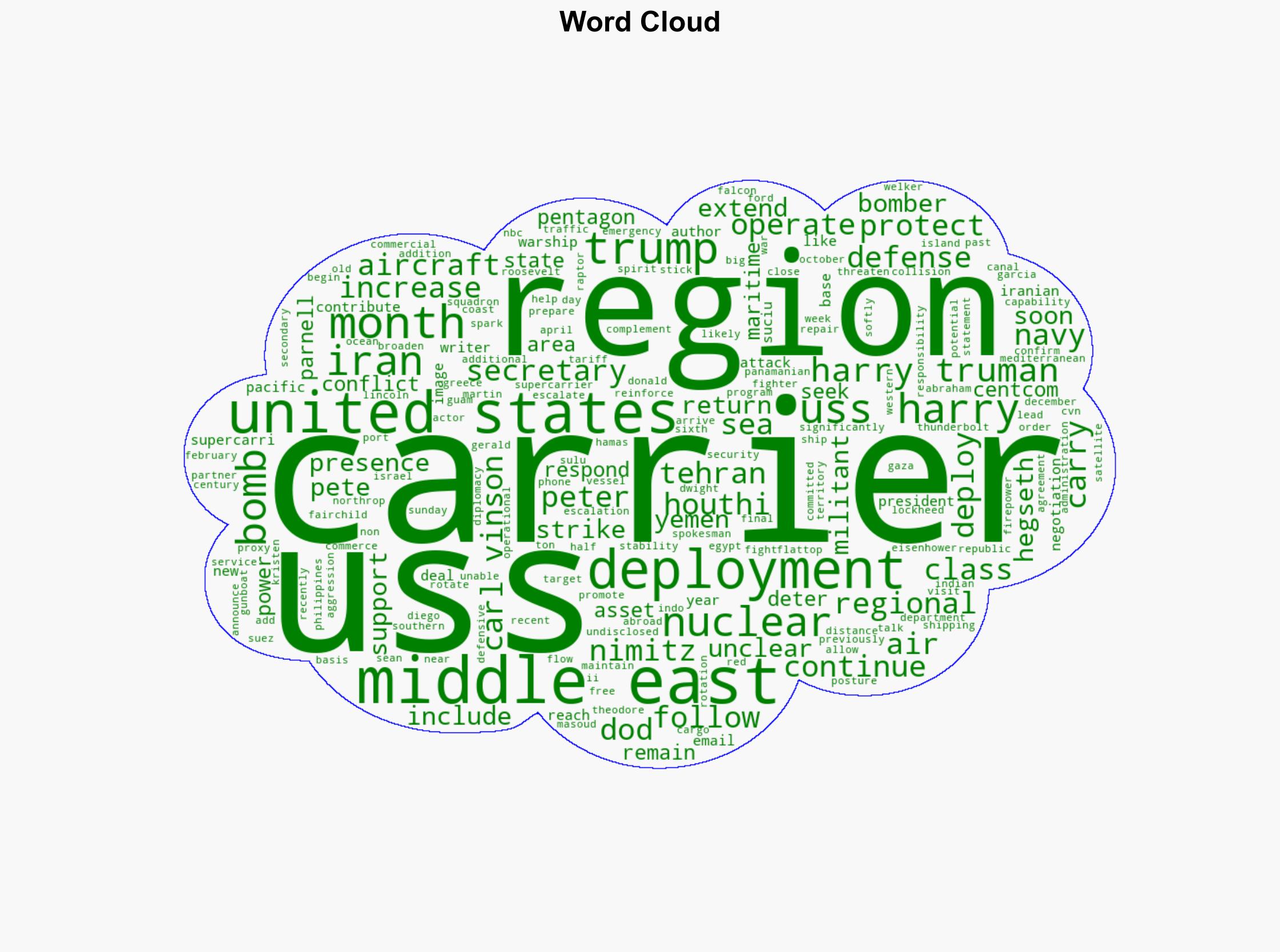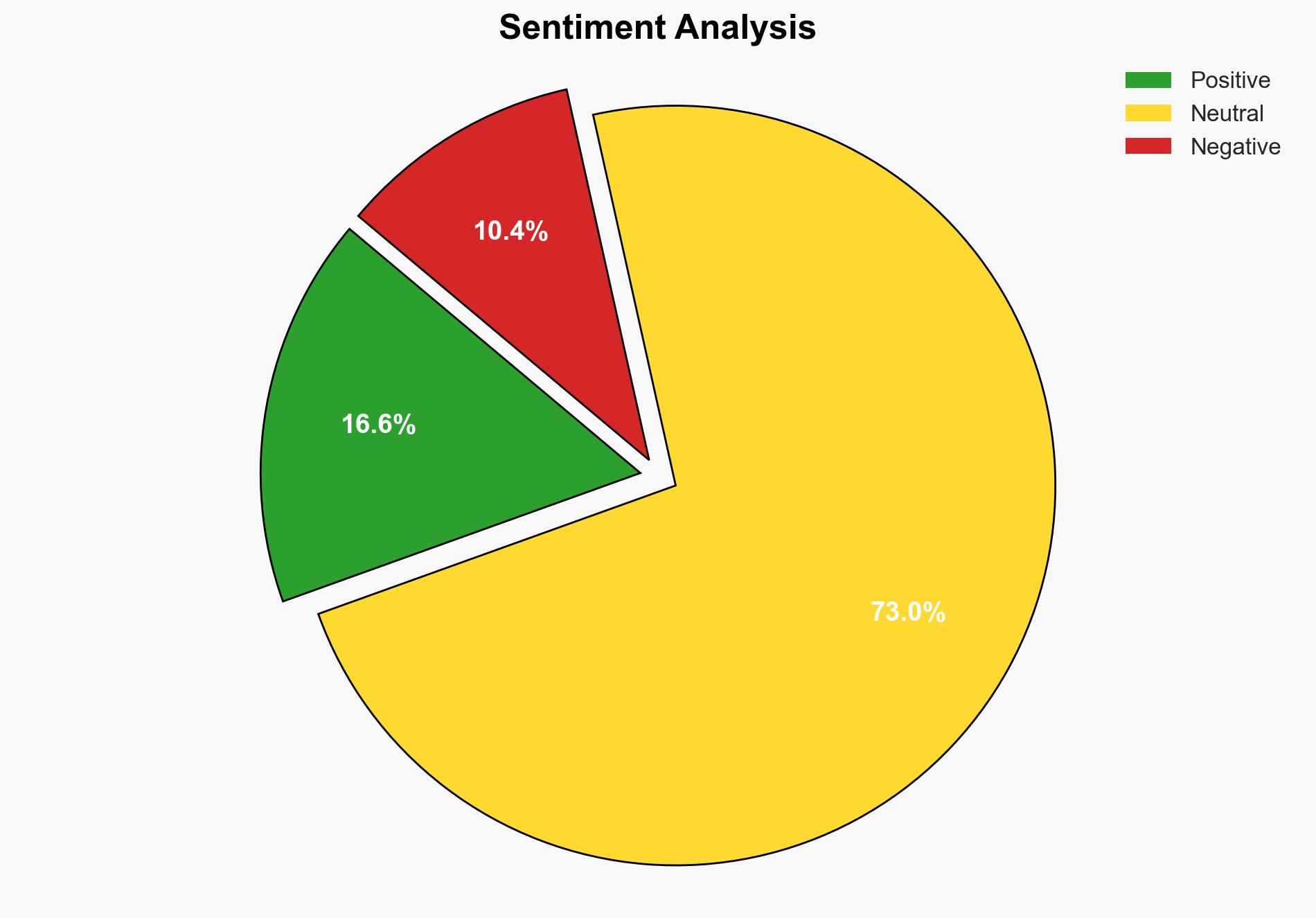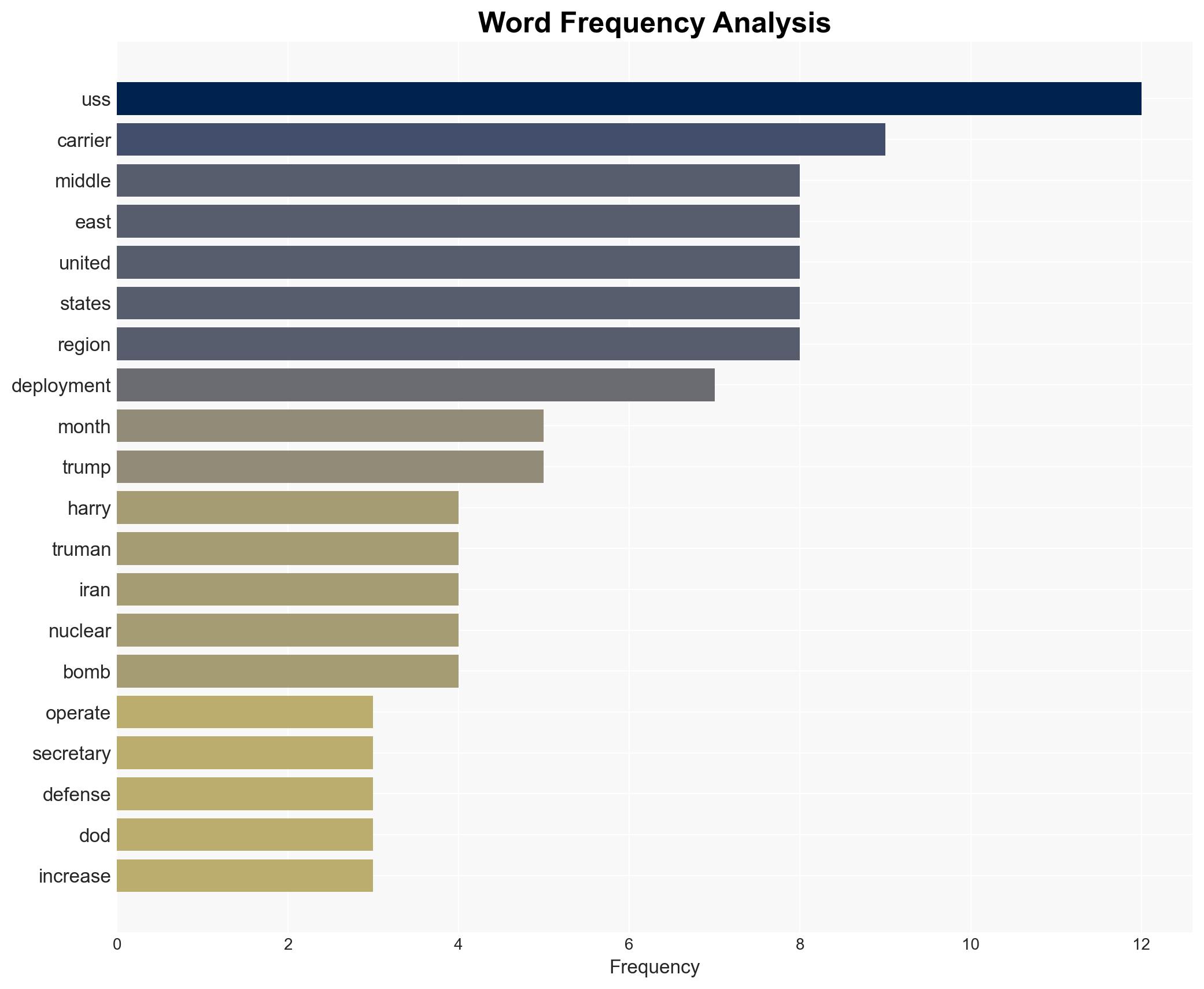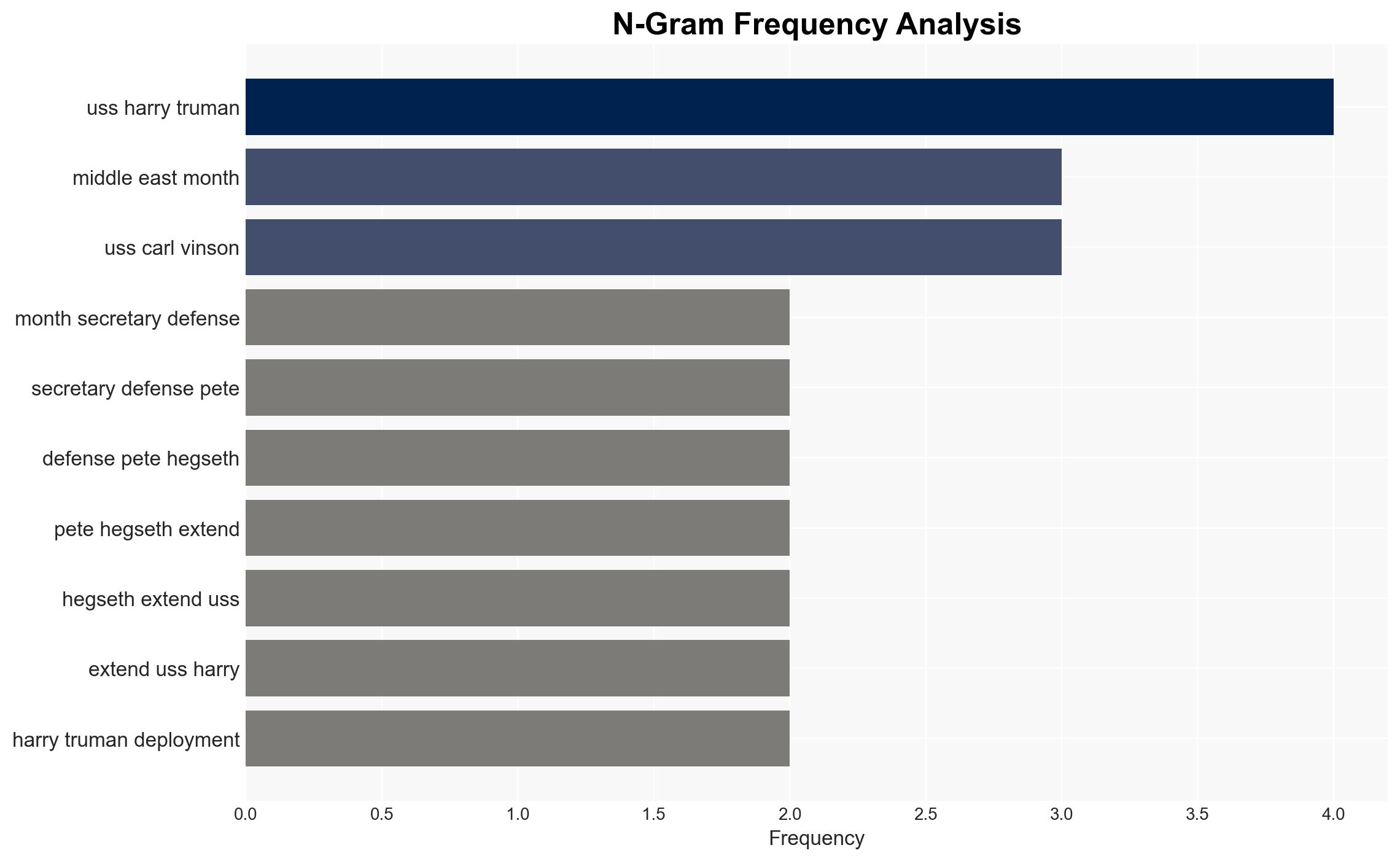These Two US Carriers Will Soon Operate in the Middle East – The National Interest
Published on: 2025-04-07
Intelligence Report: These Two US Carriers Will Soon Operate in the Middle East – The National Interest
1. BLUF (Bottom Line Up Front)
The United States is increasing its military presence in the Middle East with the deployment of two aircraft carriers, the USS Harry Truman and the USS Carl Vinson. This move aims to enhance regional stability, deter aggression, and ensure the free flow of commerce. The deployment is part of a broader strategy to counter threats from state and non-state actors, including Iran and its proxies. The presence of these carriers is expected to reinforce defensive capabilities and support ongoing operations in the region.
2. Detailed Analysis
The following structured analytic techniques have been applied for this analysis:
General Analysis
The deployment of the USS Harry Truman and the USS Carl Vinson to the Middle East is a strategic maneuver by the United States to project power and maintain a robust military presence in a volatile region. This action follows recent escalations, including attacks by Iranian-backed groups and increased tensions in the region. The carriers, along with additional air assets, are positioned to respond to potential threats and support allied operations. The deployment underscores the United States’ commitment to regional security and its readiness to counter any attempts to destabilize the area.
3. Implications and Strategic Risks
The increased military presence in the Middle East carries several implications and strategic risks:
- Heightened tensions with Iran and its proxies, potentially leading to further regional instability.
- Increased risk of military confrontations that could escalate into broader conflicts.
- Potential disruption to global oil supply routes, impacting economic interests worldwide.
- Strain on diplomatic relations with countries in the region, affecting long-term strategic partnerships.
4. Recommendations and Outlook
Recommendations:
- Enhance diplomatic efforts to de-escalate tensions and promote dialogue with regional actors.
- Strengthen intelligence-sharing and coordination with allies to improve situational awareness and response capabilities.
- Invest in technological advancements to enhance the operational effectiveness of deployed assets.
Outlook:
Best-case scenario: Successful deterrence of aggression leads to a reduction in regional tensions and stabilization of the security environment.
Worst-case scenario: Escalation of hostilities results in a prolonged conflict, adversely affecting global economic stability and security.
Most likely scenario: Continued military presence maintains a balance of power, deterring major conflicts while allowing for diplomatic efforts to address underlying issues.
5. Key Individuals and Entities
The report mentions significant individuals and organizations, including Pete Hegseth, Sean Parnell, and Donald Trump. These individuals are involved in decision-making processes related to the deployment and strategic operations in the Middle East.





